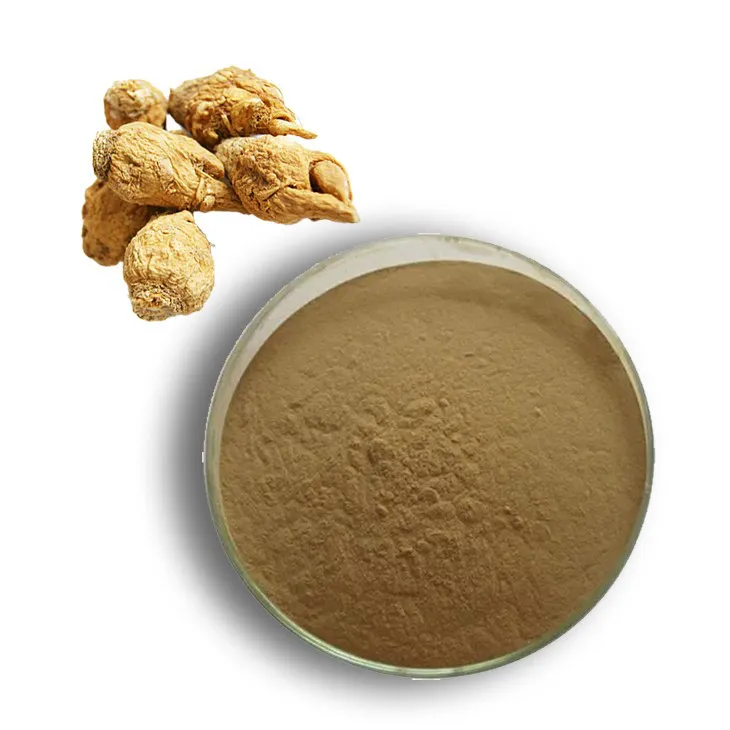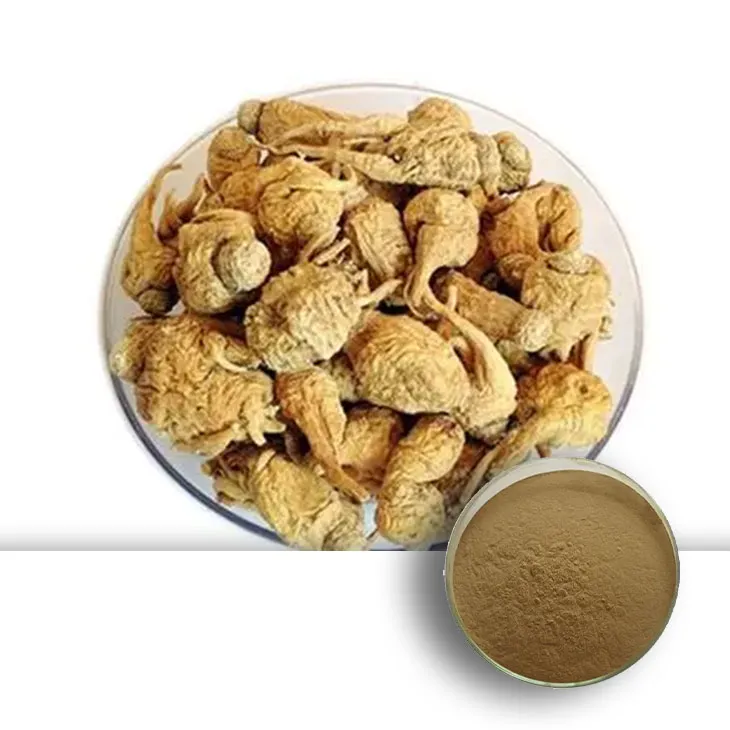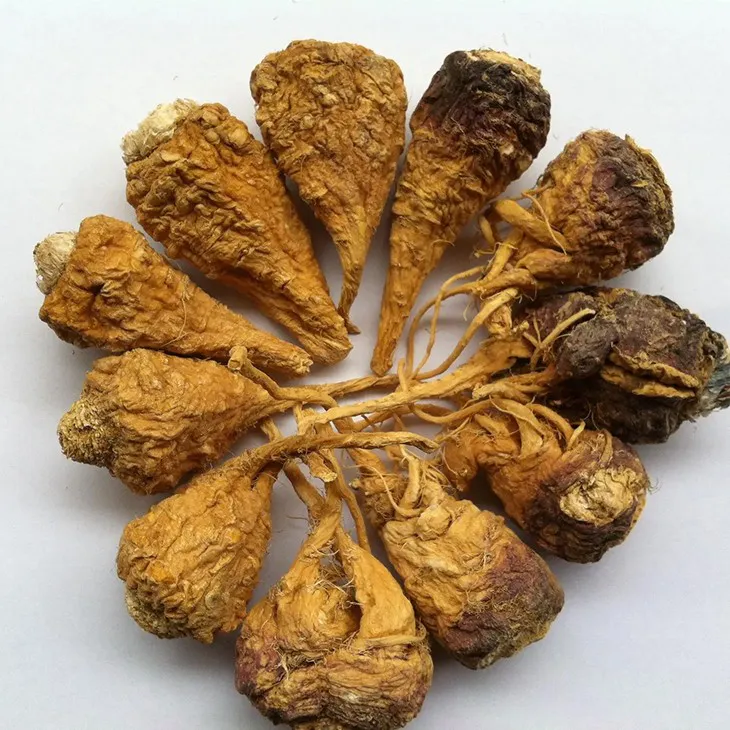- 0086-571-85302990
- sales@greenskybio.com
The extraction process of Maca extract.
2024-11-30

1. Introduction
Maca, native to the high - altitude regions of the Andes in South America, has gained significant popularity in recent years due to its potential health - promoting properties. Maca Extract, which is rich in various bioactive compounds, is widely used in the fields of food, dietary supplements, and traditional medicine. However, the extraction process of Maca Extract is a complex and multi - step procedure that requires careful consideration of various factors to ensure the quality and efficacy of the final product.

2. Raw material selection
The first step in the extraction process is the selection of high - quality Maca roots. Maca roots vary in quality depending on factors such as the variety, growing conditions, and harvesting time. When selecting Maca roots, it is important to choose those that are of the appropriate variety, for example, there are different types of Maca including yellow Maca, red Maca, and black Maca, each with potentially different chemical compositions.
The roots should be sourced from reliable suppliers who can ensure that the Maca is grown in its native or suitable environmental conditions. This typically means high - altitude regions with specific soil and climate characteristics. Additionally, the harvesting time of Maca also affects its quality. Maca is usually harvested when it has reached an appropriate maturity level, which is crucial for obtaining roots with optimal levels of bioactive compounds.

3. Pretreatment of Maca roots
3.1 Cleaning
Once the Maca roots are selected, the next step is cleaning. The cleaning process is essential to remove dirt, debris, and other impurities from the roots. This can be achieved through a simple washing process using clean water. The roots are carefully rinsed to ensure that all visible contaminants are removed. In some cases, mechanical agitation may be used to help dislodge stubborn dirt particles.
3.2 Drying
After cleaning, the Maca roots need to be dried. Drying helps to reduce the moisture content of the roots, which is important for subsequent extraction steps and for the long - term storage of the Maca. There are different drying methods available, such as natural drying in the sun or artificial drying using drying equipment.
Natural drying in the sun is a traditional method, but it requires suitable weather conditions and careful monitoring to prevent over - drying or spoilage due to moisture re - absorption. Artificial drying, on the other hand, allows for more precise control of the drying process. The drying temperature and time need to be carefully adjusted to ensure that the Maca roots are dried evenly and to an appropriate moisture level, usually around 10 - 12% moisture content.

4. Solvent extraction methods
Solvent extraction is one of the most common methods used for extracting Maca Extract. Two main solvents are commonly used: water and ethanol.
4.1 Water extraction
- Water extraction is a relatively simple and environmentally friendly method. First, the dried Maca roots are crushed into a fine powder or small pieces. This increases the surface area of the Maca, allowing for better interaction with the water during extraction.
- Then, the crushed Maca is mixed with water in a suitable ratio. The mixture is usually heated to a certain temperature, typically between 50 - 100°C. Heating helps to accelerate the extraction process by increasing the solubility of the bioactive compounds in water.
- During the extraction process, techniques such as reflux extraction can be used. Reflux extraction involves continuously cycling the water - Maca mixture through a condenser, which helps to maintain a relatively constant temperature and ensures thorough extraction. This process may last for several hours to ensure maximum extraction of the desired compounds.
- After extraction, the resulting mixture is filtered to separate the liquid extract from the solid residue. Filtration can be achieved using various methods such as filter paper, filter cloth, or membrane filtration, depending on the scale of production and the desired purity of the extract.
4.2 Ethanol extraction
- Ethanol is another popular solvent for Maca extraction due to its ability to dissolve a wide range of bioactive compounds. Similar to water extraction, the dried Maca roots are first crushed.
- The crushed Maca is then mixed with ethanol in an appropriate proportion. The ethanol concentration used can vary, but commonly used concentrations are around 70 - 90% ethanol. A higher ethanol concentration may be more effective in extracting certain hydrophobic compounds.
- Ethanol extraction can also use techniques such as ultrasonic extraction. Ultrasonic extraction utilizes ultrasonic waves to create cavitation bubbles in the ethanol - Maca mixture. These bubbles collapse, generating high - pressure and high - temperature micro - environments that enhance the extraction efficiency by breaking down the cell walls of the Maca roots and facilitating the release of bioactive compounds.
- After extraction, the mixture is filtered to obtain the ethanol - based Maca extract. The filtrate may then be further processed to remove ethanol through evaporation or other methods, depending on the final application of the extract.
5. Supercritical fluid extraction
Supercritical fluid extraction (SFE), particularly using supercritical CO₂, is an advanced extraction method for Maca extract. Supercritical CO₂ has several advantages over traditional solvents. It is non - toxic, non - flammable, and has a relatively low critical temperature and pressure, which makes it suitable for extracting heat - sensitive compounds in Maca without causing degradation.
- In the SFE process, supercritical CO₂ is first pressurized and heated to reach its supercritical state. The dried and crushed Maca is then placed in an extraction vessel.
- The supercritical CO₂ is passed through the Maca in the extraction vessel. The solubility of different bioactive compounds in supercritical CO₂ can be adjusted by changing the pressure and temperature conditions. For example, by increasing the pressure, more polar compounds can be extracted.
- After extraction, the supercritical CO₂ containing the dissolved Maca compounds is depressurized. As the pressure is reduced, the CO₂ returns to its gaseous state, leaving behind the concentrated Maca extract.
6. Post - extraction processing
6.1 Filtration
Regardless of the extraction method used, filtration is an important post - extraction step. The purpose of filtration is to remove any remaining solid particles, such as cell debris or undissolved materials, from the extract. As mentioned earlier, different filtration methods can be employed depending on the scale and requirements of the production. Fine filtration using membrane filters can achieve a high level of purity, especially for applications where a clear and pure extract is desired.
6.2 Concentration
After filtration, the Maca extract may need to be concentrated. Concentration is necessary to increase the concentration of bioactive compounds in the extract. This can be achieved through methods such as evaporation under reduced pressure or membrane concentration. Evaporation under reduced pressure is a commonly used method, especially for water - based or ethanol - based extracts. By reducing the pressure, the solvent can be evaporated at a lower temperature, which helps to preserve the integrity of the bioactive compounds.
6.3 Drying
The final post - extraction step is drying. Drying helps to convert the concentrated Maca extract into a dry powder form, which is more stable for storage and easier to handle and package. Spray drying and freeze - drying are two common drying methods used for Maca extract.
Spray drying involves spraying the concentrated extract into a hot air stream, where the solvent is rapidly evaporated, leaving behind a dry powder. Freeze - drying, on the other hand, first freezes the extract and then sublimates the ice directly into vapor under reduced pressure. Freeze - drying is often preferred for extracts that are sensitive to heat, as it can preserve the bioactive compounds better.
7. Quality control
Throughout the entire extraction process of Maca extract, strict quality control is essential. Quality control measures are implemented at each stage to ensure the safety, purity, and efficacy of the final product.
- Raw material quality control includes verifying the authenticity of the Maca variety, checking for contaminants such as pesticides and heavy metals, and ensuring that the roots are of the appropriate quality and maturity.
- During the extraction process, parameters such as extraction time, temperature, solvent concentration, and pressure (in the case of supercritical fluid extraction) need to be carefully monitored and controlled. Deviations from the optimal parameters can affect the yield and quality of the extract.
- Post - extraction, the quality of the final Maca extract is analyzed for various factors. This includes testing for the presence and concentration of key bioactive compounds using techniques such as high - performance liquid chromatography (HPLC) or gas chromatography - mass spectrometry (GC - MS). Purity tests are also carried out to ensure that there are no residual solvents or other contaminants in the extract.
8. Conclusion
The extraction process of Maca extract is a complex and multi - faceted procedure that involves raw material selection, pretreatment, extraction using different methods, post - extraction processing, and strict quality control. Each step plays a crucial role in obtaining a high - quality Maca extract that is rich in bioactive compounds and suitable for various applications in the fields of food, dietary supplements, and medicine.
FAQ:
1. What are the main factors to consider when selecting Maca roots for extraction?
When selecting Maca roots for extraction, several factors need to be considered. Firstly, the origin of Maca roots is important. Roots from regions with suitable climate and soil conditions are likely to be of higher quality. Secondly, the maturity of the roots is crucial. Mature roots usually contain more active ingredients. Additionally, the appearance of the roots should be inspected to avoid those with signs of disease or damage.
2. Why are water and ethanol common solvents in Maca extract extraction?
Water and ethanol are common solvents in Maca extract extraction for several reasons. Water is a relatively safe and inexpensive solvent, and it can dissolve many polar substances present in Maca. Ethanol, on the other hand, has good solubility for a wide range of compounds in Maca. It can also help in the extraction of both polar and non - polar components. Moreover, ethanol is easy to remove during the subsequent purification steps due to its relatively low boiling point.
3. How does ultrasonic extraction work in the Maca extract extraction process?
Ultrasonic extraction in the Maca extract extraction process works by using ultrasonic waves. These waves create cavitation bubbles in the solvent - Maca mixture. When these bubbles collapse, they generate intense local shock waves and micro - jets. These physical effects can break the cell walls of Maca more effectively, allowing the active ingredients to be released more easily into the solvent, thus enhancing the extraction efficiency.
4. What are the advantages of supercritical fluid extraction (using supercritical CO₂) in Maca extract extraction?
Supercritical fluid extraction using supercritical CO₂ has several advantages in Maca extract extraction. Firstly, CO₂ is non - toxic, non - flammable, and environmentally friendly. Secondly, it has a relatively low critical temperature and pressure, which is suitable for the extraction of heat - sensitive components in Maca without causing thermal degradation. It also has good diffusivity and solubility, which can selectively extract different components from Maca, and the extract obtained is relatively pure with few impurities.
5. How is quality control carried out during the Maca extract extraction process?
Quality control during the Maca extract extraction process is carried out in multiple ways. Firstly, the quality of the raw Maca roots is inspected and tested for contaminants, such as heavy metals and pesticides. During the extraction process, parameters such as solvent concentration, extraction time, and temperature are carefully monitored and controlled. After extraction, the purity and composition of the extract are analyzed using techniques like chromatography and spectrometry. The final product is also tested for stability and microbiological safety.
Related literature
- The Chemical Composition and Pharmacological Activities of Maca"
- "Optimization of Maca Extract Production: A Review"
- "Supercritical Fluid Extraction of Maca: Process and Quality Evaluation"
- ▶ Hesperidin
- ▶ citrus bioflavonoids
- ▶ plant extract
- ▶ lycopene
- ▶ Diosmin
- ▶ Grape seed extract
- ▶ Sea buckthorn Juice Powder
- ▶ Beetroot powder
- ▶ Hops Extract
- ▶ Artichoke Extract
- ▶ Reishi mushroom extract
- ▶ Astaxanthin
- ▶ Green Tea Extract
- ▶ Curcumin Extract
- ▶ Horse Chestnut Extract
- ▶ Other Problems
- ▶ Boswellia Serrata Extract
- ▶ Resveratrol Extract
- ▶ Marigold Extract
- ▶ Grape Leaf Extract
- ▶ blog3
- ▶ blog4
-
如何用甜叶菊提取物制作粉末
2024-11-30
-
Kidney bean extract of the best quality.
2024-11-30
-
Optimal Bioavailability of Marigold Extract.
2024-11-30
-
Ganoderma lucidum extract manufacturer.
2024-11-30
-
Bayberry extract with the highest praise.
2024-11-30
-
Beta Carotene
2024-11-30
-
Boswellia Serrata Extract
2024-11-30
-
Panax Ginseng Leaf Extract
2024-11-30
-
Quercetin
2024-11-30
-
melatonin extract
2024-11-30
-
Reishi mushroom extract
2024-11-30
-
Giant Knotweed Extract
2024-11-30
-
Europen Bilberry Extract
2024-11-30
-
Citrus Aurantium Extract
2024-11-30
-
Pomegranate Extract
2024-11-30





















